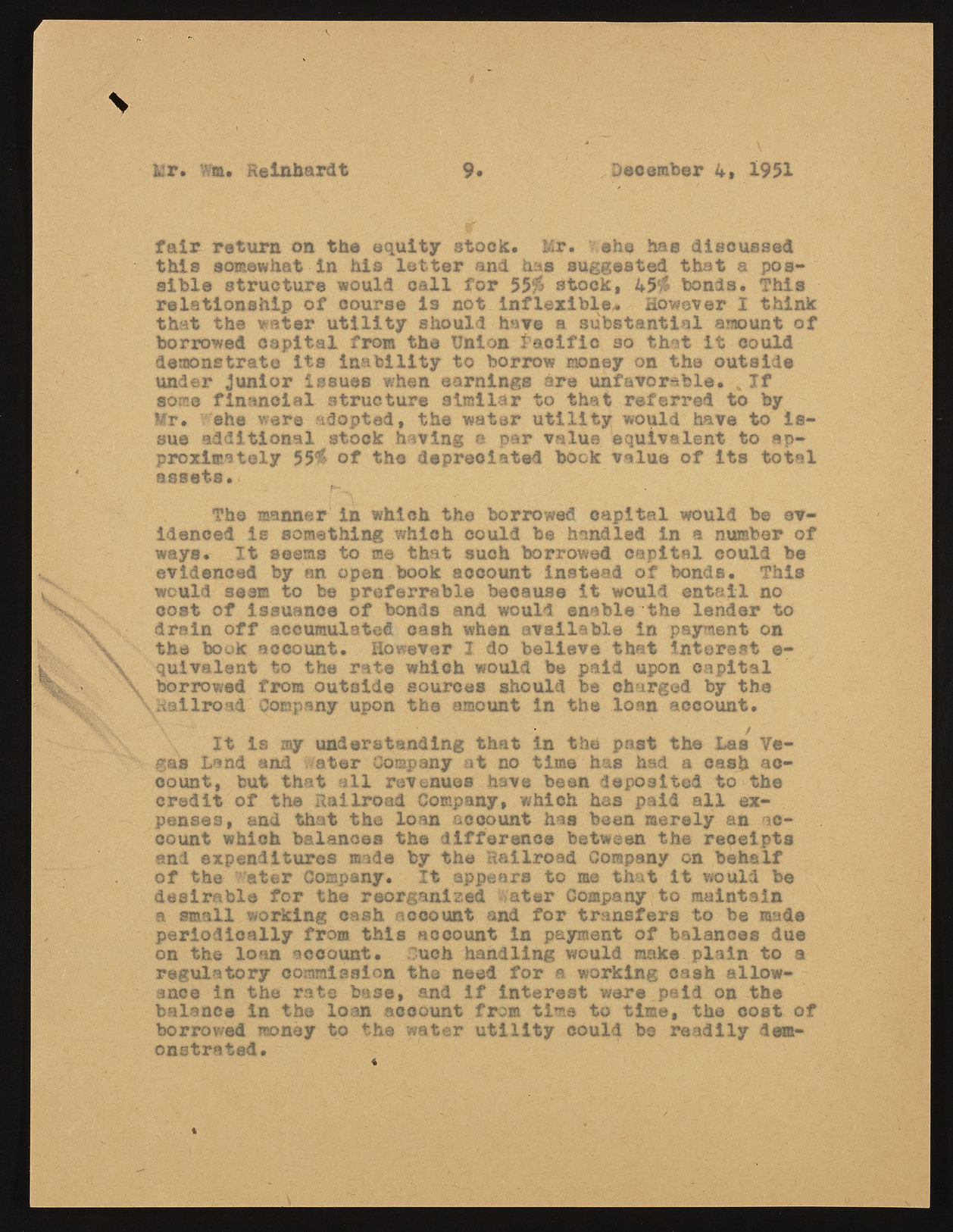Copyright & Fair-use Agreement
UNLV Special Collections provides copies of materials to facilitate private study, scholarship, or research. Material not in the public domain may be used according to fair use of copyrighted materials as defined by copyright law. Please cite us.
Please note that UNLV may not own the copyright to these materials and cannot provide permission to publish or distribute materials when UNLV is not the copyright holder. The user is solely responsible for determining the copyright status of materials and obtaining permission to use material from the copyright holder and for determining whether any permissions relating to any other rights are necessary for the intended use, and for obtaining all required permissions beyond that allowed by fair use.
Read more about our reproduction and use policy.
I agree.Information
Digital ID
Permalink
Details
More Info
Rights
Digital Provenance
Publisher
Transcription
Mr. wm* Reinhardt 9. December 4, 1951 fair return on the equity stock* Mr. ehe has disoussad this somewhat in his letter and has suggested that a possible structure would call for 55$ stock, 45$ bonds. This relationship of course is not Inflexible,. However I think that the water utility should hare a substantial amount of borrowed capital from the Union Pacific so that it could demonstrate Its inability to borrow money on the outside under Junior issues when earnings are unfavorable. % If some financial structure similar to that referred to by Mr. eha were adopted, the water utility would have to issue additional stock having & par value equivalent to approximately 55$ of th© depreciated book value of its total assets. p>i • - . . . The manner in which the borrowed capital would b© evidenced is something which could be handled in a number of ways. It seems to me that such borrowed capital could be evidenced by an open book account instead of bonds. This would seem to be preferrabls because it would entail no cost of issuance of bonds and would enable the lender to drain off accumulated cash when available in payment on the book account. However I do believe that interest ©- quivalent to the rate which would be paid upon capital borrowed from outside sources should be charged by the vMailroad Company upon the amount in the loan account. / It is my understanding that in the past th© las Vegas Land and Water Company at no time has had a cash account, but that all revenues have been deposited to th© credit of the Railroad Company, which has paid all expenses, and that the loan account has been merely an account which balances the difference between the receipts end expenditures made by the Railroad Company on behalf of the "'ater Company. It appears to me that it would be desirable for the reorganised Water Company to maintain a small working cash account and for transfers to be made periodically from this account in payment of balances due on the loan account. Cnch handling would make plain to a regulatory ooismiaston the need for a working cash allowance in the rate base, and if interest were paid on the balance in the loan account from time to time, the cost of borrowed money to the water utility could be readily demonstrated.

